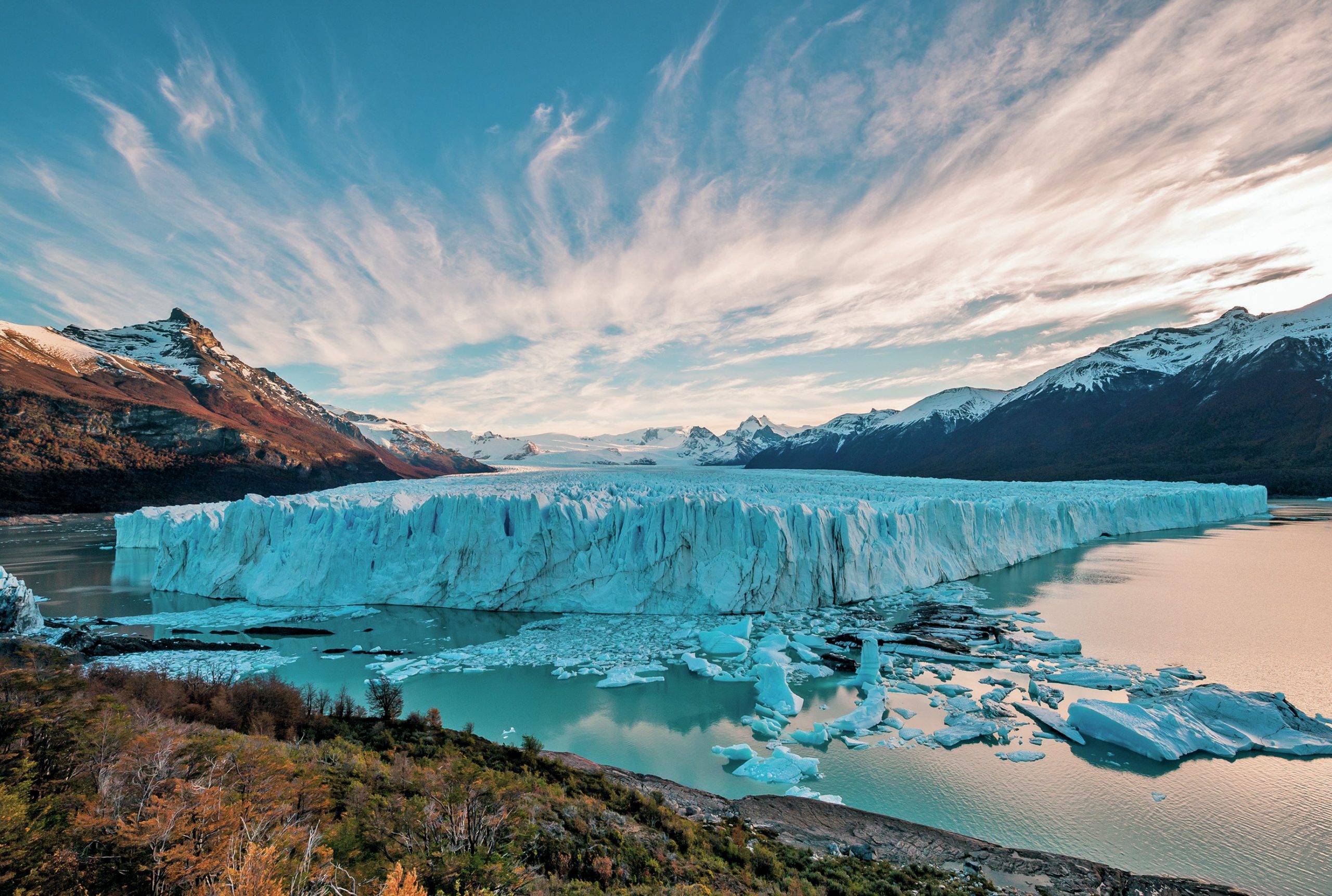
Take a look at tinyurl.com/nhvfcea to see an animated cross-section of a typical upland glacier. The ice moves downhill due to the pressure of increased ice accumulation in its upper part and also because of gravity, which will be influenced by the gradient. In the magnified cell you can see how snowfall is compressed into glacier ice.
Placing the cursor over each of the four yellow circles changes the information box beneath the cross-section. Move the yellow slider to the right along the horizontal scale at the bottom towards ‘Warm’ (Figure 1). Notice how the glacier ‘retreats’, while fresh ice is still moving downslope as warmer air temperatures cause more rapid melting at the lower end. Then move the slider towards the ‘Cold’ end and see how the glacier not only extends further down the slope but also builds up an accumulation of glacial debris at its snout, called terminal moraine (Figure 2). Cause the glacier to retreat and advance several more times to notice other changes in the animation.
Your organisation does not have access to this article.
Sign up today to give your students the edge they need to achieve their best grades with subject expertise
Subscribe




